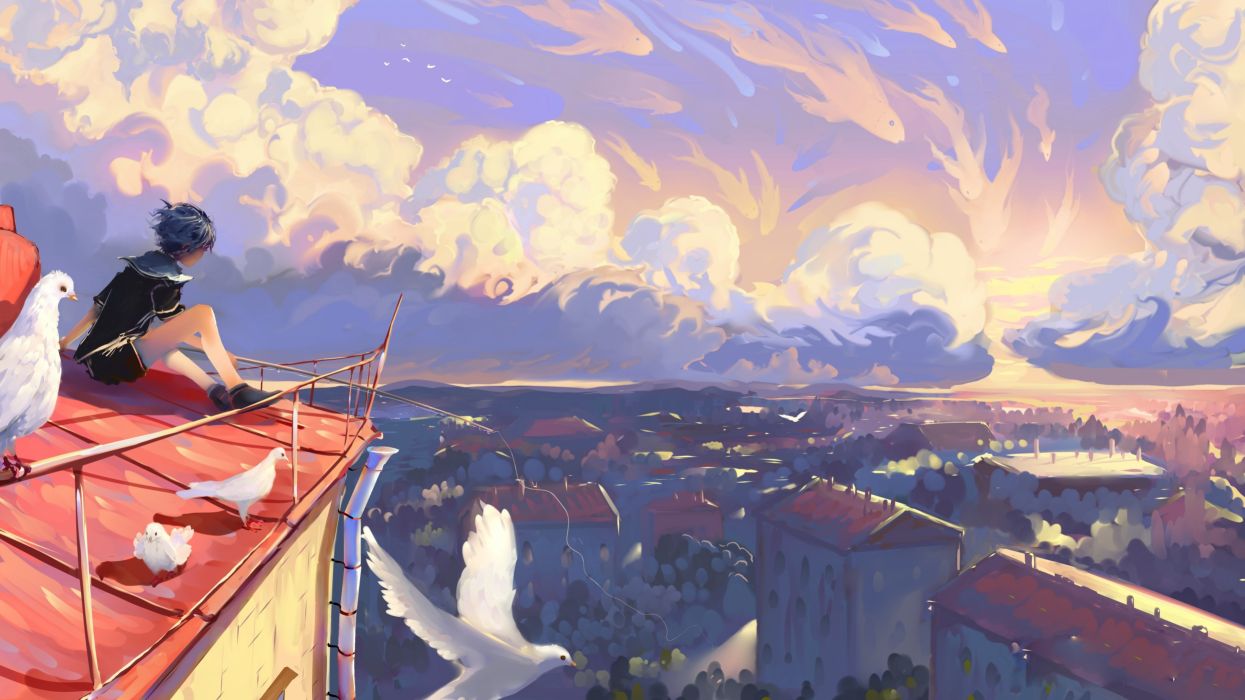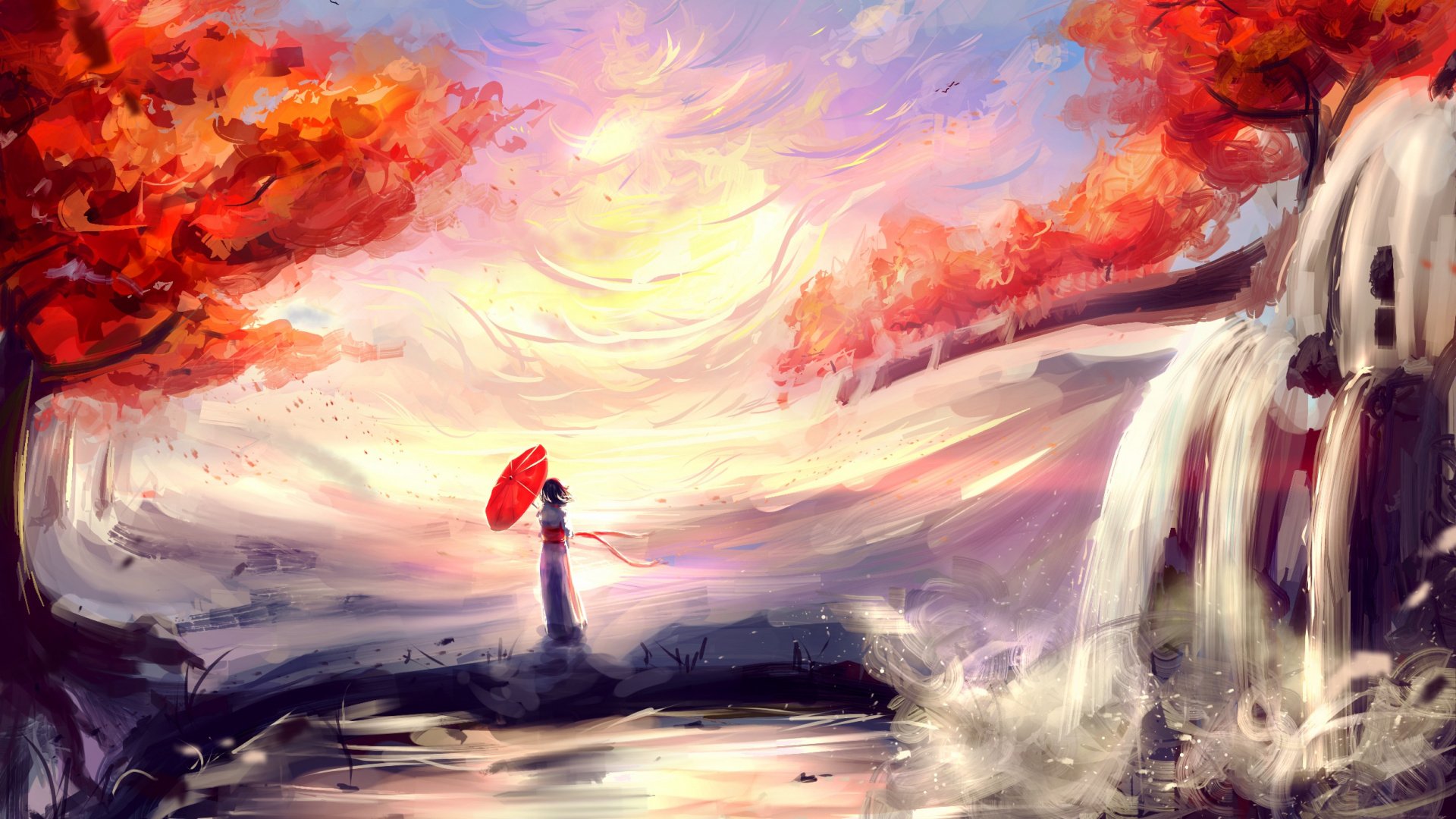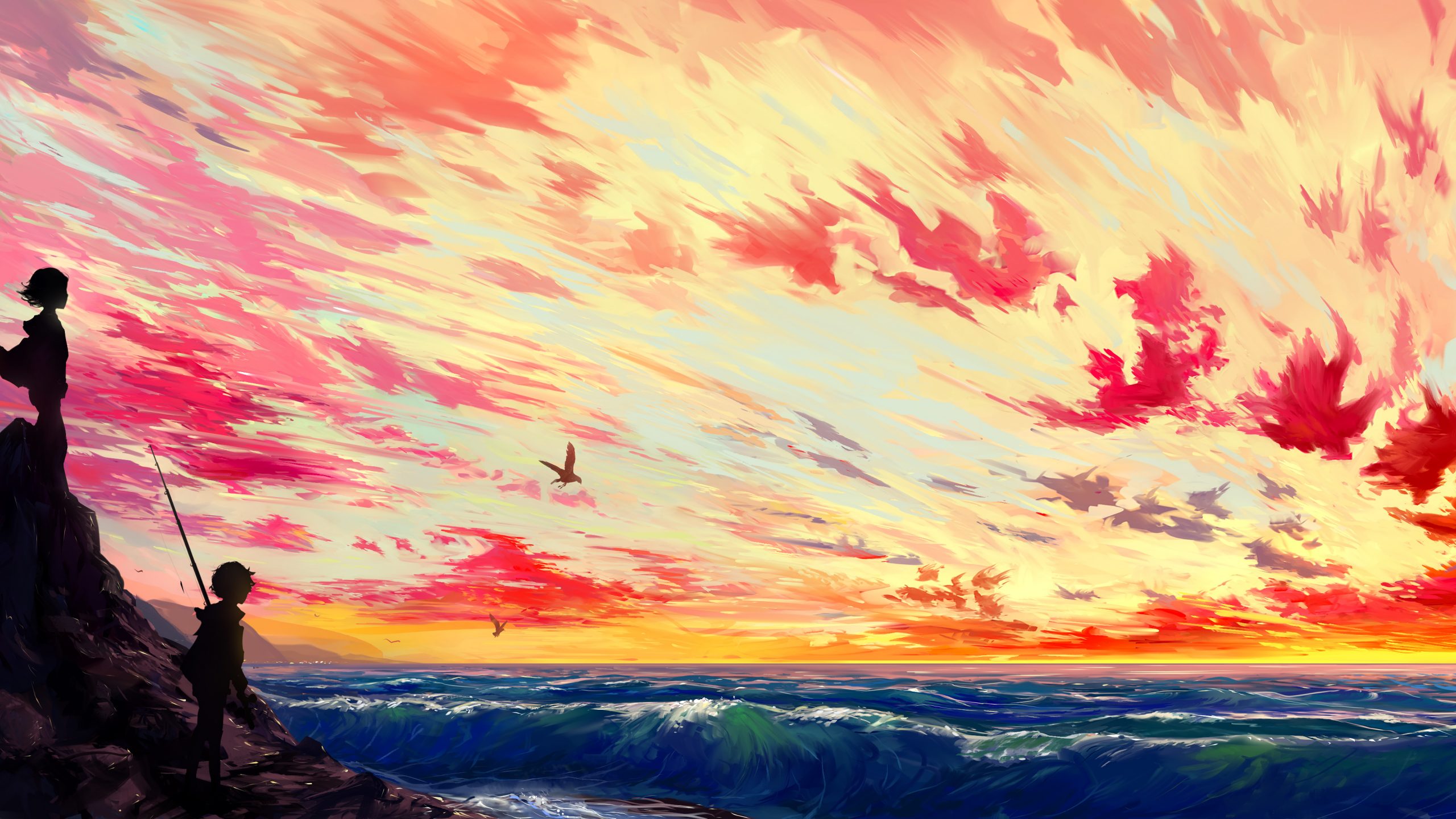The Power Of Suggestion
Oftentimes, a suggestion of an object can be enough for the viewer to ‘complete the scene’ for themselves, with little effort of the artist.be lazy in a smart wayhave Using and mastering these types of ‘lazy’ techniques doesn’t make you less of an artist.better your In other words, you don’t even have to be an expert on landscapes, foliage, perspective, buildings, etc. to come up with a good background! Don’t hesitate to experiment!
Character #: Mia18 Lectures 11hr 21min
- Story and Personality
- 59,623 Students
- 5 Courses
Hello everyone! I am an artist that focuses on digital painting and character design. I want to encourage my students on creativity and have an eye for design. My main goal as an instructor is to give inspiration for beginner artists and help them by giving a simpler way of viewing drawing and for them to have fun with art!
How To Draw Anime Hair
How to draw anime hairstyles. This is what you want to achieve. Is it easy? No. But with a little practice, youll get a hold of it.
Have a plan in mind when getting ready to draw an anime characters hair.
Start off drawing your anime hairstyle with a basic shape.
Dont get tangled in the details, but instead focus on getting a good visual foundation of the hairstyle you have in mind. Until youve moved into the coloring stage, its best to think of the hair as a solid mass.
Recommended Reading: How To Draw Anime Body Girl
How To Blend The Character Into The Background
2021-01-29
This time we will use the Windows version of CLIP STUDIO to draw the characters and background.
I planned the main composition of the character over coffee. I use the default mechanical pencil tool and draw roughly at a small size.
The frame is prepared on the upper layer. I lower the opacity while working, but sometimes I set it to 100 to make it easier to visualize the finished image. It’s easier to understand if you color-code the parts that overlap in front and behind.
I will use this perspective grid.
Drag it to the layer window and then match the size of the canvas.
You can use Ctrl + Shift + T to free transform the image, so pull the middle point of the right side, and when the perspective is close to your image, press Enter to decide. The height of the middle point is the eye level.
Add another perspective material, this time a perspective with a setting that intersects the perspective line perpendicular to the eye level. Two main perspective grids are created. The green line is the eye level, the blue line is the horizontal perspective, and the red line is the depth perspective.
For this character, I did not use a dynamic pose or an extreme angle. She is in line with the main perspective grid. I aligned the lines for both shoulders and elbows. Only the head is twisted, so the height of the face parts are different on the left and right.
Consider the placement of the colors. This picture has a yellow base, with blue and red as accent colors.
Use A Tinted Background To Soften The Hardness Of A Plain Background

If you have used a plain background but want to soften its hardness at the same time, you can use a tinted background. Basically, a tinted background is also a plain background but you can add some shades of colors or pencils in the selected areas, maybe in the corner of the painting or at the edges of the main subject.
The tinted background helps a lot in making the subject to focus the attention of the viewer. But one thing that should be kept in mind is that such colors should be used for a tinted background that matches the colors used in the subject.
What you have learned: If you do not want to use a plain background but make the background simple as well, you can use a tinted background by shading in some areas of the background.
Recommended Reading: Where To Watch Anime On Smart Tv
Painting Tree Leaves With Custom Photoshop Brush
Ghibli Inspired Background Step : Details
In the last few process images, you see me adding details to the tree shape established in prior steps. I finally paid more attention to the brushstrokes I left on the canvas as they were likely to be my last layer of paint.
Finally, I was more satisfied with the level of detail and overall tree shape and it was time to put the brush away.
I found myself thinking about the environment and what it would be like to find myself in it. This was a good sign, since for me, one of the great characteristics of Ghibli backgrounds is the ability to envision exploring in them.
Once I was done with my Ghibli style painting, I took it to Photoshop and applied multiple adjustments to try to get an image that is a more exciting in its color without changing much of the subject matter.
You are welcome to download the high-resolution Photoshop file where you can see the various tools I applied to the image to have it look like the finished version you see here. I will also make available all of the steps in this tutorial in high resolution at the download link below.
I hope you enjoyed this guide on painting visuals similar to what we find in Studio Ghibli backgrounds. Drop me a line here and let me know if you want to see a part two to this tutorial exploring further into landscape painting.
Also Check: What Is A Ova Anime
Building On Your Sketch
it’s time to transform your idea into a final product.Process gif of The flames in the foreground cast light on the edge of the clock in the background.The clockwork inside is mostly shielded by the foremost parts of the clock, thusappears darker.
Rendering
Rendering refers to paying attention to textures and structures of objectsshould shouldn’t It’s more pleasing to the eye if something is left more up to suggestion, than defined in an incorrect or unnatural way.
How Do You Put A Background On An Anime In Photoshop
You May Like: What If Adventure Time Was An Anime
Learn How To Color Anime Drawings
Effective use of color is quite simple, really: simply apply what you know about the color wheel.
Warm colors, cool colors, contrasting colorsexperiment with them to get the effects you want. Warm colors convey heat, danger, and passion. They tend to be very dramatic.
Cool colors are calmer and often used for water or ice. However, depending on whats around them, the feeling can change.
Contrasting colors, for instance, always draw the eye. Always be mindful of anyone who might be viewing your art and what mood or action you want to convey.
How Do I Make An Image Anime In Photoshop
Don’t Miss: Anime Male Body Side View
How Do You Make An Anime Picture In Photoshop
What Are Your Options

There are several different types of backgrounds you can use in your painting. Each type will suit different subjects and styles.
No Background
No background is only really suitable for study pieces or if you have a very strong subject which you want to draw complete attention to. In pretty much every other case you would be better off having at least some kind of background to complement the subject, no matter how simple.
Stained Canvas
The stained canvas is similar to having no background, but you have the benefit of at least having some color and texture.
Partial Background
Sometimes a partial background to give some context and contrast is all that is needed. It can produce a very painterly effect and can be highly effective for focusing the subject in a still life or portrait.
Full Background – Simple
A full and simple background will provide context without drawing attention away from the main subject.
Full Background – Detailed
A detailed background can produce stunning results but is difficult to pull off. At best, you will have an intricate painting which has many interesting parts . But at worst, you will have a confusing painting which lacks focus and coherency.
You May Like: How To Draw Feet Front View
Adding Highlights And Shadows
Highlights and shadows will give your anime background extra detail. This will also set the cell animation apart from the background. This is because the cell animation uses simple highlights and shadows, while the background can use complex blending and shading. Select a color that is a few shades lighter than the midtone to add highlights. If you are using watercolor, you will need to use colored pencils to create highlights. Consider your light source before adding highlights. Your light source is the direction that the light is coming from. For example, if the sunlight is coming from the upper left-hand corner, you will need to add highlights to the tops of objects as well as a thin line of highlights along the left side. Add shadows with darker versions of your midtones. Place these where the light source would have trouble reaching. Blend the highlights into the midtones by wetting your brush and slowly pulling a small amount of highlight paint into the midtone area. Do the same for the shadows.
Resources
Use Light Colors In The Background So It Can Complement With The Main Elements
The first and foremost tip that may help you in drawing the background of your artwork is using light colors. When plain backgrounds are not used, obviously some colors are added in the background to make them look appealing. Such colors should be added in the background that can complement the main object of the drawing rather than competing with it.
Lets say you are drawing a landscape where there are brown rocks in the front and at the back, there are large mountains. The upper portion of the painting is filled with sky. As the rocks in the front are the focal points and are dark brown in shade, for coloring the background , you need to add colors mixed with white.
For example, for the sky, you can add light blue color and for mountains, you can add the same brown shade that was used for the foreground rocks but this time, the color is mixed with white to add a light effect to the background.
What you have learned: Never add such colors in the background that competes with the focal point for the attention of the viewer!
Also Check: Is There A Fire Emblem Anime
Painting Tips And Techniques: How To Paint A Background
Whether it’s a still life or a portrait of a person or pet, having a relatively simple or uncluttered background allows the focus to fall entirely on the subject. Oftentimes, though, beginning artists paint the subject first and then don’t know what to do with the background. To avoid that problem, paint the background first. If you do that, then you won’t struggle to figure out what to paint in the background or worry about accidentally painting over a bit of your carefully painted subject. Then as you paint the subject, you can work in a little color from it into the background to help unify the painting if needed.This sequence of photos by artist Jeff Watts shows an effective way to paint a background that is simple but has visual interest and impact.
Artistic license means you can have the light coming from whichever direction you desire. You simply decide where you want it, then paint in the colors at their most saturated closest to the light and weaker furthest from the light.Jeff said, “First, find your light source. In this painting, it’s coming from the left. So thats where I started with the darkest color, black, and alizarin crimson, using criss-cross strokes.”
Who This Course Is For:
- Beginner artists wanting to draw anime
- Beginner artists wanting to learn basic anatomy
- Artists who want to learn how to design characters
- Artists who want to learn how to make illustrations
- How to Use Q& A04:38
- Most Common Questions and Answers10:59
- Difference between Characters and Illustrations05:52
Don’t Miss: Drawing Anime Boobs
Ghibli Inspired Background Step : Context Helps Get Closer To The Heartwarming Ghibli Look
In this stage, I decided that to achieve a likeness to the Ghibli style I need to place the tree in the context of the surrounding environment.
I then added a background as well as an indication of where clouds are going to be placed.
Here I used the smudge tool in Procreate to blend some of the clouds together and into the background of the sky.
Here I experimented some more with a representation of leaves in bunches to show overall form and purposely avoided drawing every single leaf.
I then started to paint the clouds and I was thinking about how they will peak through the tree.
The foreground and background should be easily identified by the viewer for an illusion of depth and distance. So I also tried to make sure that the edges of the clouds and the tree do not interact in a confusing way.
Here I added a cast shadow from the tree onto the grass. Adding the cast shadow has really helped properly situate the tree in the environment and I probably should have added it much earlier in the process to help me better visualize the rest of the painting
If you are not sure what a cast shadow is, I highly recommend going over my tutorial on drawing light and form which can be found here.
How Do You Make Animated Pictures
You May Like: Anime Weapons Drawing
Anime Background Tutorial By Risachantag
This is a tutorial for drawing and colouring anime/fantasy backgrounds on Photoshop it would also apply to Painter and Paintshop Pro. I wouldnt recommend it to beginners, although I imagine anyone could learn something from it. Having a drawing tablet is recommended.
^_^ Hope you guys find it useful! I put a lot of time and work into it. Any comments/suggestions are very much appreciated.
Never Use A Plain Paper Background For Complex Compositions

Want another tip for drawing backgrounds? Never use a plain paper background for complex compositions. A plain paper background means that you have not drawn a background because the color of the paper serves as a background.
This type of background is easy because you just need to select the right color of paper that you may use as a background. BUT a plain paper background does not work well for complex compositions.
If the subject is complex, a plain paper background will make the subject dull and boring instead of making it interesting to look at.
That being said, a plain paper background can work well if you are working on a still life painting or drawing a simple portrait.
What you have learned: For simple portraits and still life paintings, using a plain paper background is good but for complex art compositions, never use a plain background.
Recommended Reading: What Red Flag Anime Character Do You Kin
Parallel Lines In The Background Should Not Conflict With One Another
In the left image, it shows a sofa that is next to the curtains. This creates parallel lines from the edge of the sofa and the edge of the curtain. In the right image, the parallel lines are avoided by moving the sofa in front of the curtains.
For designing the background of a drawing, another technique is about parallel lines. To make a background add a positive vibe to the subject, you can draw parallel lines in the background but they should not conflict with one another.
Lets take an example of a background of a room. In such a drawing, you need to show the interior of the room such as a sofa, flower vase, clock, wall hanging, or a table. If you group the furniture or other interior items of the room in such a way that the lines are becoming parallel, what will it show? Can we call it a good composition? Absolutely not!
The parallel lines are conflicting with one another. They should be broken by other objects. For example, if you have drawn a curtain then its parallel line should not match with that of the sofa .
What you have learned: If the background of your artwork contains many parallel lines, make sure that they are not conflicting with each other. Always try to make them with some objects!